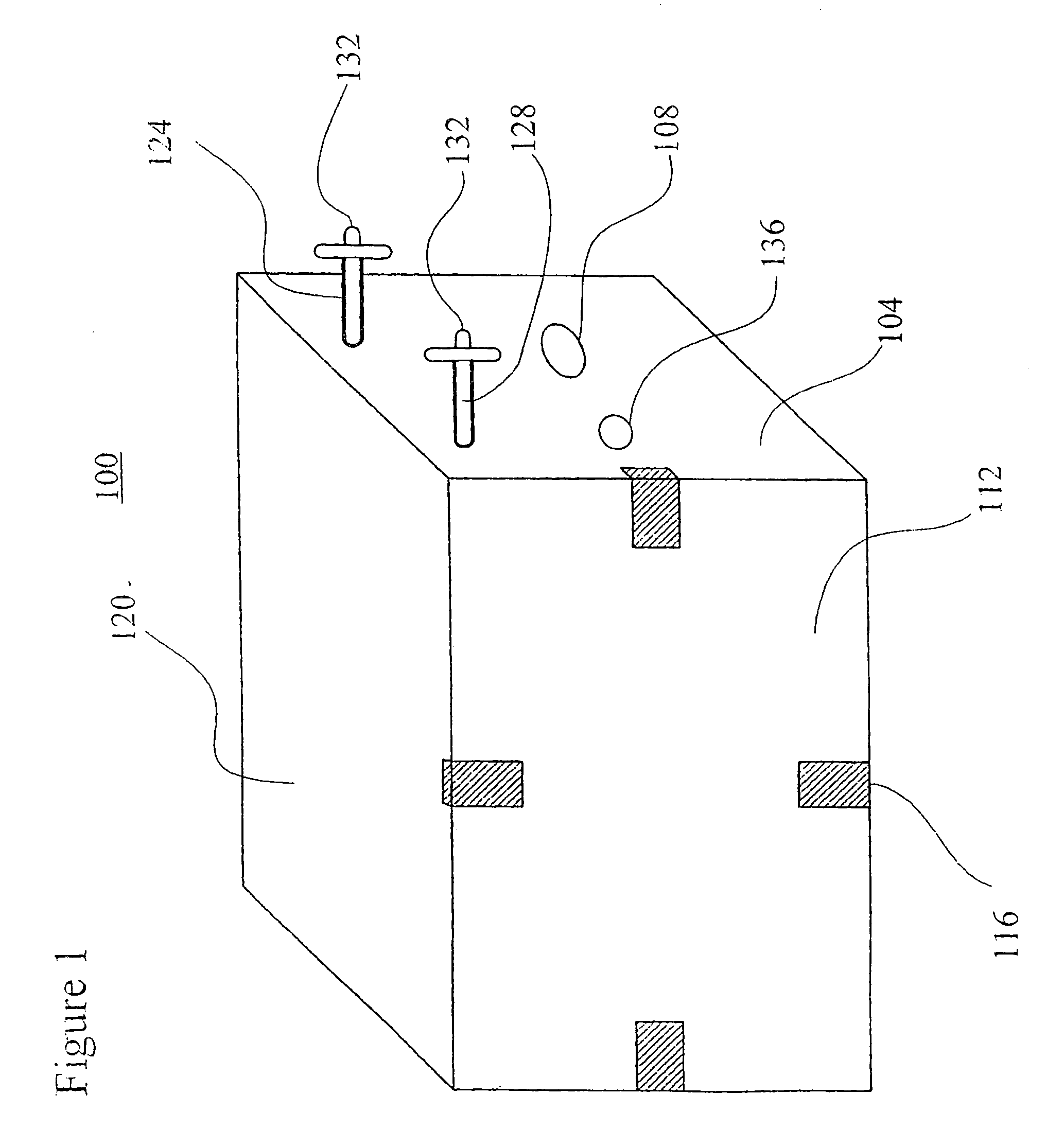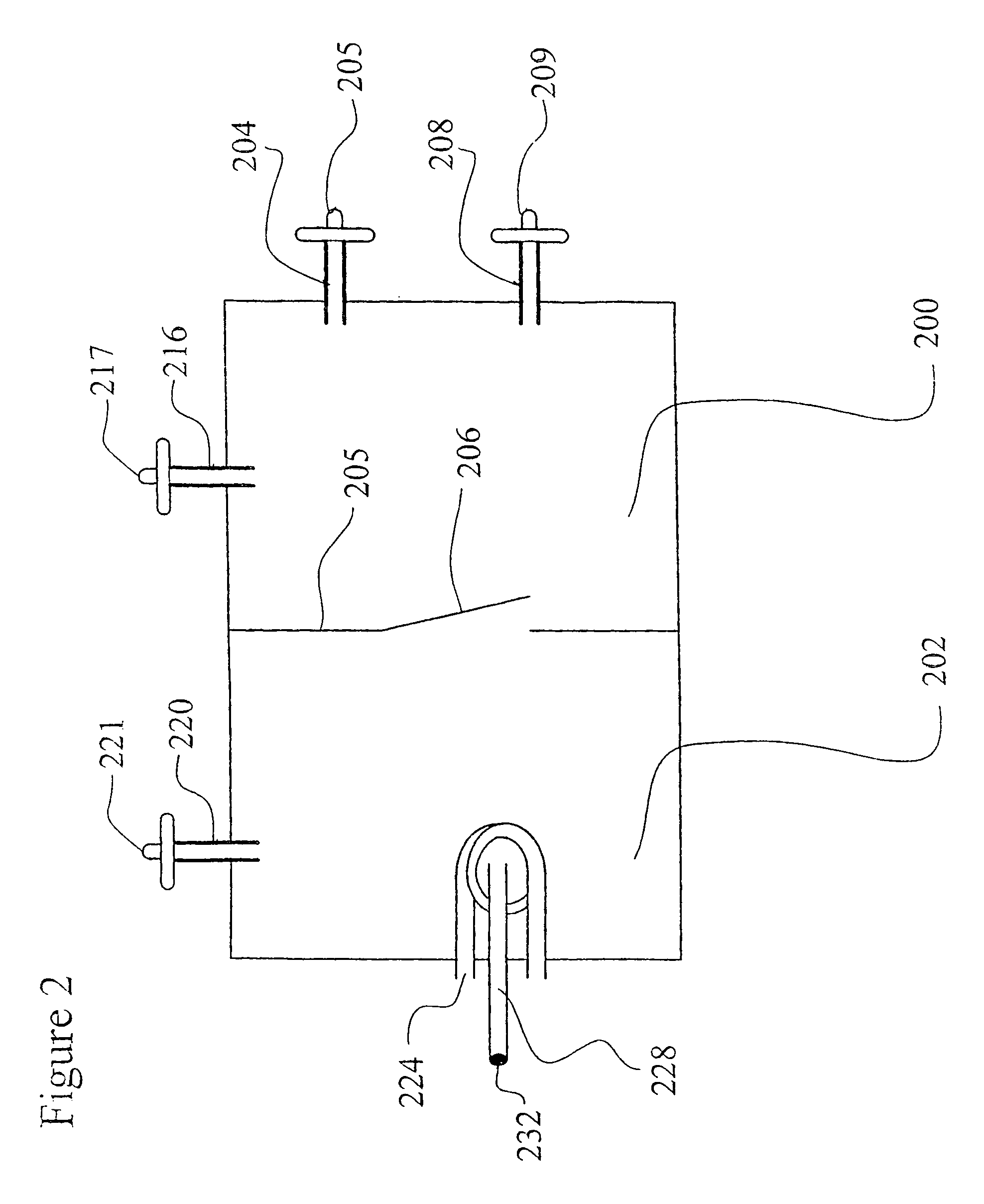Apparatuses and methods for the production of haematophagous organisms and parasites suitable for vaccine production
a technology of haematophagous organisms and parasites, which is applied in the field of apparatuses and methods for the production of parasites in hematophagous insects, can solve the problems of inability to immunize large numbers of susceptible individuals by employing, and the life cycle of parasites is complex and complex
- Summary
- Abstract
- Description
- Claims
- Application Information
AI Technical Summary
Benefits of technology
Problems solved by technology
Method used
Image
Examples
example
[0076]The sugar feeding reservoirs are charged with a small amount of sucrose. Several Milliliters of a thick suspension of fine particulate solution suitable for ingestion by Anopheles larvae is mixed with 300 milliliters of water and is placed into the larva rearing reservoir of the system. The door between the insect rearing portion and the blood meal portion is closed and the container is autoclaved at 120 degrees Celsius at 30 pounds per square inch pressure for 30 minutes. The device is allowed to slowly cool to room temperature. Semi-synthetic larva rearing broth is then sterilely filtered into the larva rearing reservoir to replace or replenish any heat labile nutrients.
[0077]Approximately 100 Ancphe7es stephensi eggs which have been surface sterilized by agitating for 10 minutes in 70 percent ethanol and 1 percent benzalkonium chloride and washed are transferred into the system with a pipette using sterile technique via the egg transfer port. The surface sterilized eggs, no...
PUM
| Property | Measurement | Unit |
|---|---|---|
| temperatures | aaaaa | aaaaa |
| temperature | aaaaa | aaaaa |
| temperatures | aaaaa | aaaaa |
Abstract
Description
Claims
Application Information
 Login to View More
Login to View More - R&D
- Intellectual Property
- Life Sciences
- Materials
- Tech Scout
- Unparalleled Data Quality
- Higher Quality Content
- 60% Fewer Hallucinations
Browse by: Latest US Patents, China's latest patents, Technical Efficacy Thesaurus, Application Domain, Technology Topic, Popular Technical Reports.
© 2025 PatSnap. All rights reserved.Legal|Privacy policy|Modern Slavery Act Transparency Statement|Sitemap|About US| Contact US: help@patsnap.com



